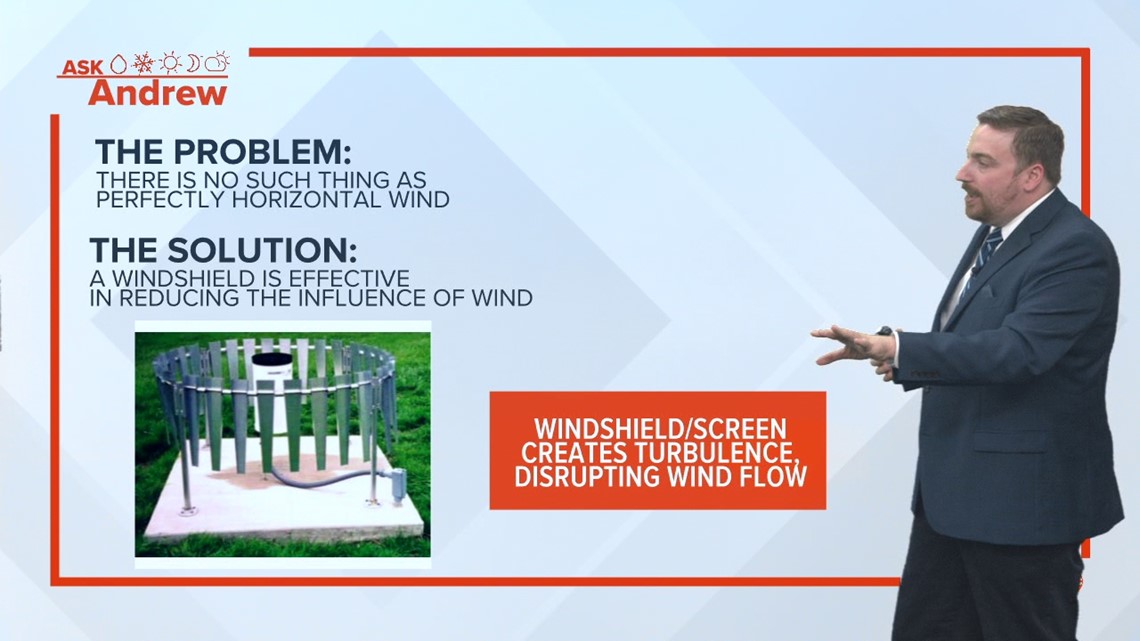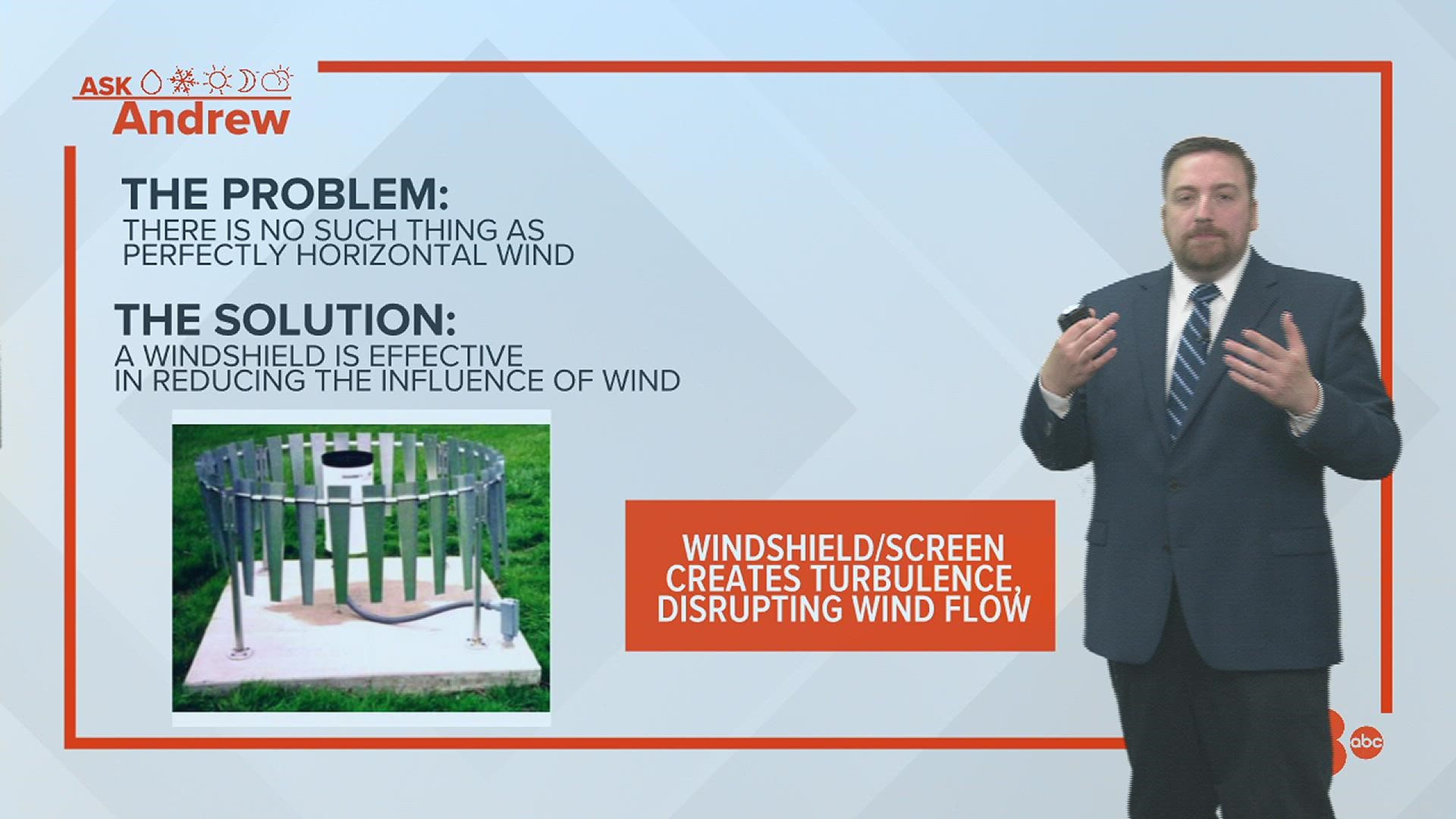MOLINE, Ill. — Most of us have a rain gauge of some sort sitting in the yard that gives us an idea of how much or how little moisture fell from the sky during a storm.
Often times when it rains, there's also some wind that comes along with it, so does that wind make it harder to measure rainfall, especially if that rain is blowing sideways? That's the question asked by Cindy M. from Sterling, Illinois.
How do you measure rain when the wind is blowing it sideways?
Brace yourself, we are heading into some territory that involves some physics for this particular explanation!
Typically, during a rain event that doesn't involve any sort of strong wind speed, raindrops will fall vertically with little fanfare. However, throw some wind into the mix, and things get a little complicated. The wind isn't constant, it's always changing in terms of speed and direction.
Rain gauges also come in several different sizes and shapes. Smaller rain gauges are likely going to struggle with any type of wind, given the small opening. Gauges with a larger opening will likely perform a bit better, especially if they have a design that incorporates some kind of windscreen.


Most professional rain gauges have a design that is built so the effects of wind are minimized. There are a couple of ways to do this.


Windshields or windscreens designed specifically for rain gauges can help create turbulence, breaking up the flow of wind moving across the top of the opening of the rain gauge itself. This gives water droplets enough time to "drop" into the gauge, rather than flying across the top of it.
Some companies have also designed more aerodynamic rain gauge measurement cones that prevent the creation of upward motion near the top of the rain gauge, which also allows the raindrops to fall into the device more efficiently. Whichever method you choose, both are sure to provide slightly more accurate results when it comes to measuring that liquid gold from the sky.
What's the best rain gauge to use? Check out the official CoCoRaHS (Community Collaborative Rain, Hail & Snow Network) gauge, here!
Have a question you'd like me to answer? Click here!

